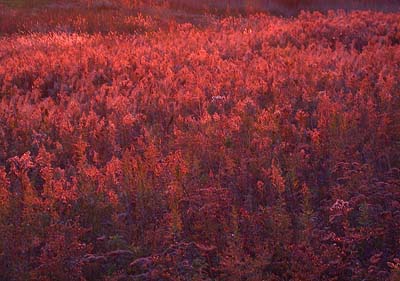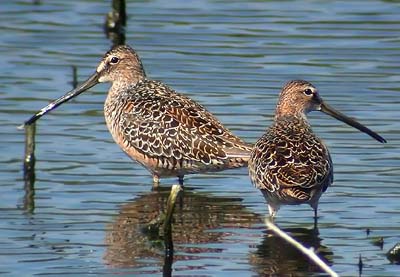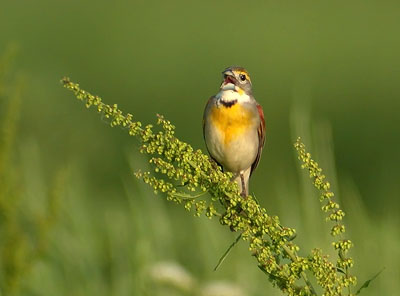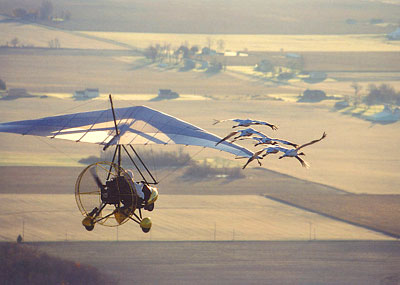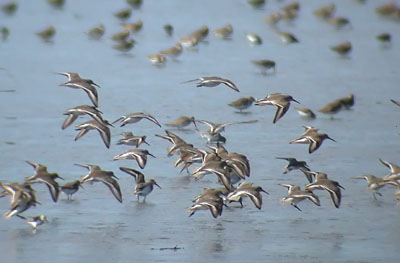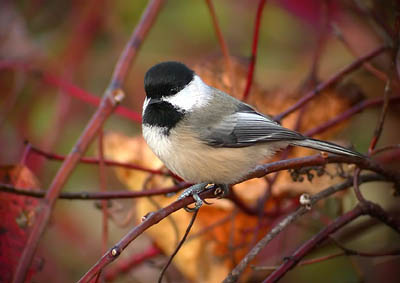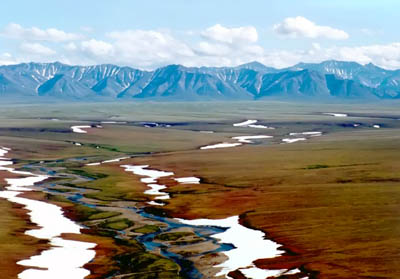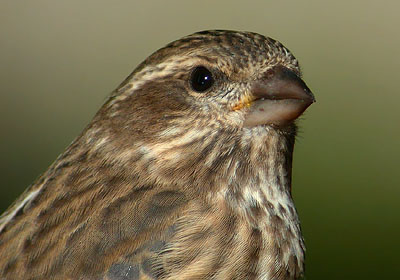
From Ron Pittaway, Ontario Field Ornithologists:
GENERAL FORECASTThere should be a moderate to good flight of most (not all) winter finch species out of Ontario's boreal forest this fall and winter. See individual species' forecasts below. Cone crops and birch seed crops range from poor to good across northern Ontario. Very few northern areas have excellent crops. Many crops are patchy or spotty with some trees having good crops while nearby trees have poor crops. On the Canadian (Precambrian) Shield of central Ontario including Algonquin Park, seed crops are very poor on most species. In much of urban and agricultural southern Ontario, seed crops are generally poor so expect finches at feeders this winter. Below I discuss nine winter finch species and three other irruptive passerines whose movements are often linked to winter finches.
NINE WINTER FINCHES1.
Pine Grosbeak: This species is a mountain-ash (rowan berry) specialist in winter. Mountain-ash crops are generally good to excellent in northwestern Ontario (north and west of Lake Superior to Manitoba) so Pine Grosbeaks will do well there this winter. However, the crop is variable to poor in northeastern Ontario (north and east of Lake Superior to Quebec) so expect some Pine Grosbeaks in Algonquin Park and farther south this winter. Two early Pine Grosbeaks were seen October 4th in Algonquin where they do not breed. If they come into urban and agricultural southern Ontario, watch for them on European mountain-ash and ornamental crabapples. Pine Grosbeaks prefer sunflower seeds at bird feeders.
2.
Purple Finch: Most Purple Finches should leave Ontario this fall to winter farther south. They began moving south in early October. Tree seed crops are poor in southern Ontario so any Purple Finches that stay will be at bird feeders where they prefer black oil sunflower seed and nyger (niger) seed. Numbers have declined in Ontario and North America. Breeding Bird Surveys indicated a 50% decline from 1966 to 1996 in the northeastern United States and southern Canada. The cause is unknown; it probably is not linked to the spread of House Finches because Purple Finches declined even where House Finches were absent.
3.
Red Crossbill: There are at least two main forms of Red Crossbill in Ontario: a small-billed form (sitkensis) that prefers hemlock and a larger-billed form that prefers pines, mainly white pine. Small-billed Red Crossbills will be absent or very rare this winter because most hemlocks in Ontario failed to produce cones this year. Red Crossbills with larger bills will be widespread in very small numbers this winter in central and northern Ontario where cone crops on white pine are locally good, but spotty. A few Red Crossbills were seen in early October in pine forests on the east side of Algonquin Park. Red Crossbills wandering into southern Ontario this winter may turn up at feeders because cone crops on native and ornamental pines, spruces and larches are very poor.
4.
White-winged Crossbill: Cone crops on spruce are good in parts of northern Ontario such as around Timmins in northeastern Ontario where White-winged Crossbills should be present in small numbers this winter. However, spruce cone crops are poor around Sault Ste Marie east of Lake Superior so expect few or no crossbills there. This unevenness of cone crops is widespread across the north. Very few or no White-winged Crossbills are expected in Algonquin Park where spruce and hemlock cone crops are very poor. White-winged Crossbills wandering into southern Ontario this winter may turn up at feeders because cone crops on both native and ornamental pines, spruces and larches are very poor.
5.
Common Redpoll: When redpolls winter in the boreal forest they prefer birch (Betula) seed. Since White Birch seed crops are average to good in many parts of northern Ontario, I expect many redpolls will stay north this winter. However, some redpolls likely will wander south in mid-winter as seed supplies diminish. Watch for them at feeders where they feed with goldfinches on nyger seed. Redpolls and most winter finches wander more widely than is generally realized. For example, Barry Kinch of the Mountain Chutes Banding Station near Elk Lake in northern Ontario banded a Common Redpoll on March 4, 2001 that was found dead a year later on March 24, 2002 in Kimberly, British Columbia, which is a straight line distance of 2611 kilometres west.
6.
Hoary Redpoll: Always check flocks of Common Redpolls for Hoarys. Classic "snowball" adult male Hoarys are easy to identify, but some adult females and particularly first year females are difficult to identify.
7.
Pine Siskin: There are very few conifer seeds to hold siskins in the boreal forest and Algonquin Park this winter. Siskins are now moving south through southern Ontario. Most will be elsewhere in North America this winter. Any siskins remaining in southern Ontario this winter will be at feeders where they prefer nyger seed.
8.
American Goldfinch: In Algonquin Park goldfinches were moving in August and good numbers were migrating west along the north shoreline of Lake Ontario in September and early October. This movement is an indicator of the poor tree seed crops in central Ontario. Many goldfinches will remain at feeders in southern Ontario.
9.
Evening Grosbeak: This has been a mystery species in recent years. Where are the flocks of "Greedies" that crowded feeders 25 years ago? The decline is real. Kelling (1999) analyzed Christmas Bird Counts from 1959 to 1998. Numbers of Evening Grosbeaks were stable or increased until 1980 when numbers began to decline. The rate of decline increased between 1990 and 1998 with the Northeast and Great Lakes regions having the steepest declines in winter. Recently, Bolgiano (2004) provided the most plausible explanation for the decline. He found higher numbers during outbreaks of spruce budworm and lower numbers after outbreaks ended. Evening Grosbeaks feed heavily on budworm larvae and the larvae are fed to young. Evening Grosbeaks began to decline in 1980 after the last major outbreak of spruce budworm during the 1970s. Evening Grosbeaks coming into southern Ontario will find a good crop of samaras (keys) on Manitoba Maples and an abundance sunflower seeds at feeders.
THREE IRRUPTIVE PASSERINES1.
Blue Jay: A big flight started in mid-September and large numbers are still moving southwest along the shorelines of Lakes Ontario and Erie. This year's big flight appears to be linked to the generally poor acorn crop on Red Oak which was spotty. There were lots of acorns in some areas, but they dropped early and most were of low quality. In addition, hazelnut and beechnut crops were mainly poor (some good) this year in central Ontario. Last winter Blue Jays were common in central Ontario including Algonquin Park, but this winter they will be much less common. Those that remain will be tied to bird feeders.
2.
Red-breasted Nuthatch: The Red-breasted Nuthatch is a conifer seed specialist when it winters in the boreal forest. It often irrupts south like the boreal finches. A cone crop failure is indicated when large numbers migrate south in late August and September. Similarly, when none move it normally indicates a bumper cone crop in the boreal forest. However, this year only a small number of Red-breasted Nuthatches moved through southern Ontario in September and currently they are scarce in Algonquin Park and the boreal forest of northeastern Ontario. Where are they?
3.
Bohemian Waxwing: Like the Pine Grosbeak, this boreal waxwing is a mountain-ash (rowan berry) specialist in winter. Many are expected to stay in northwestern Ontario (west of Lake Superior) this winter because there is a good to excellent mountain-ash berry crop. However, the crop is variable to poor in northeastern Ontario (east of Lake Superior) so expect some Bohemians to move farther south. They likely will come into traditional areas such as Peterborough and Ottawa to feed on European mountain-ash, buckthorn berries and small crabapples.
ACKNOWLEDGEMENTS
For information on tree seed crops I appreciate the input of the following Ontario Ministry of Natural Resources (OMNR) staff, foresters, biologists, resource technicians, tree seed nursery staff and birders: Dennis Barry (Haliburton Highlands), Barb Boysen (OMNR), Glenn Coady (Rainy River/Lake of the Woods), Ed Czerwinski (OMNR Peterborough/Bancroft), Shirley Davidson (OMNR Minden), Bruce Di Labio (Eastern Ontario), Carolle Eady (Dryden), Dave Elder (Atikokan) Nick Escott (Thunder Bay), Charity Hendry (Angus Tree Seed Nursery), Peter Hynard (OMNR Minden/Peterborough), Jean Iron (Timmins to Muskoka), Mark Joron (Milsom Forestry Service in Timmins), Barry Kinch (Timiskaming), Bob Knudsen (OMNR Sault Ste Marie), Scott McPherson (OMNR South Porcupine), John Miles (Haldimand-Norfolk), Dave Milsom (Ontbirds), Thomas Noland (OMNR Sault Ste Marie), Fred Pinto (OMNR North Bay), Don Sutherland (OMNR Peterborough), Ron Tozer (Algonquin Park), Mike Turner (OMNR Bancroft District), Stan Vasiliauskas (OMNR Timmins and Restoule), Mike Walsh (OMNR Muskoka/Parry Sound). I am grateful to Ron Tozer for helpful comments and for information from his book-in-progress, the Birds of Algonquin Park.LITERATURE CITED1. Bolgiano, N.C. 2004. Cause and Effect: Changes in Boreal Bird Irruptions in Eastern North America Relative to the 1970s Spruce Budworm Infestation. American Birds 58:26-33.
2. Kelling, S. 1999. Population Trends in Evening Grosbeak. BirdSource
http://www.birdsource.org/Features/Evegro/index.htmlRon Pittaway
Ontario Field Ornithologists
Minden and Toronto ON
Purple Finch image © 2005 Michael McDowell



























